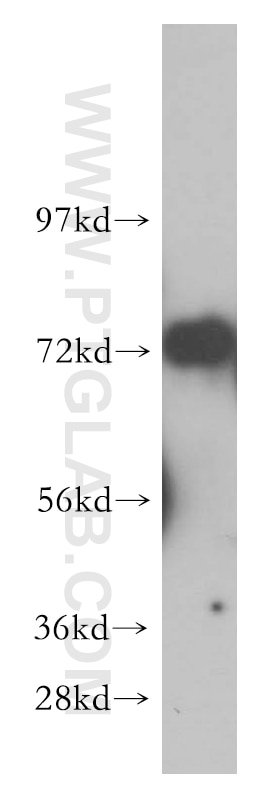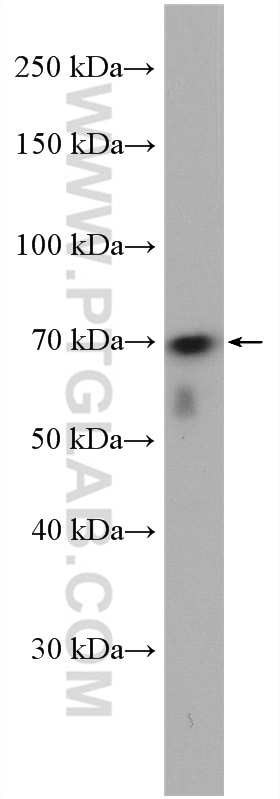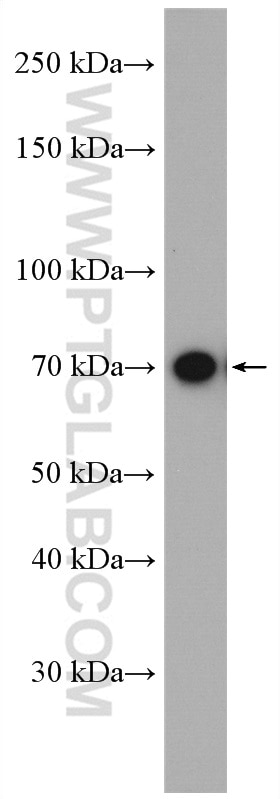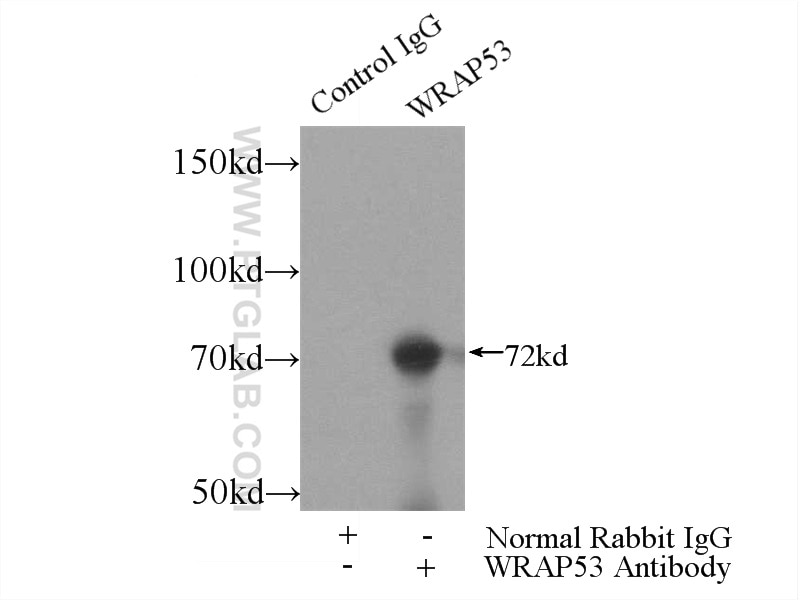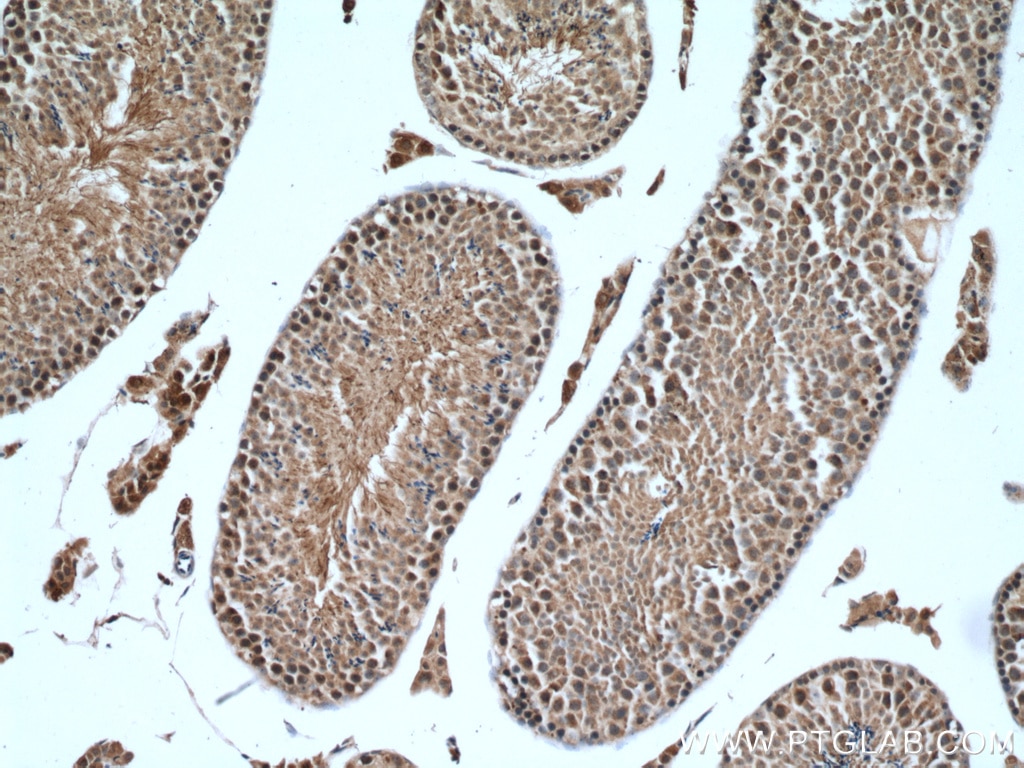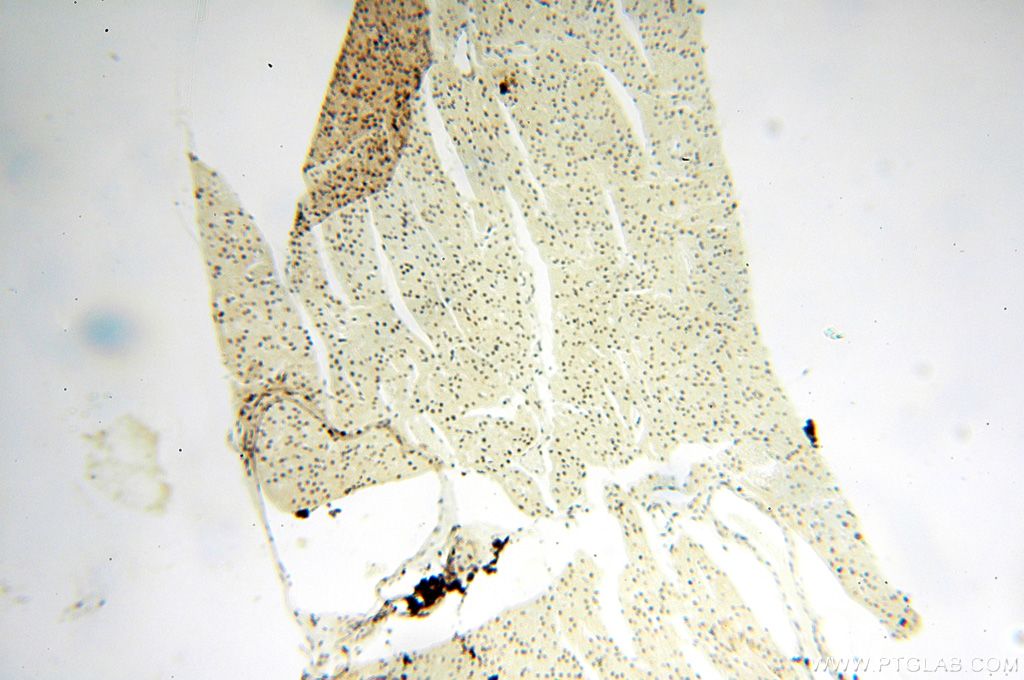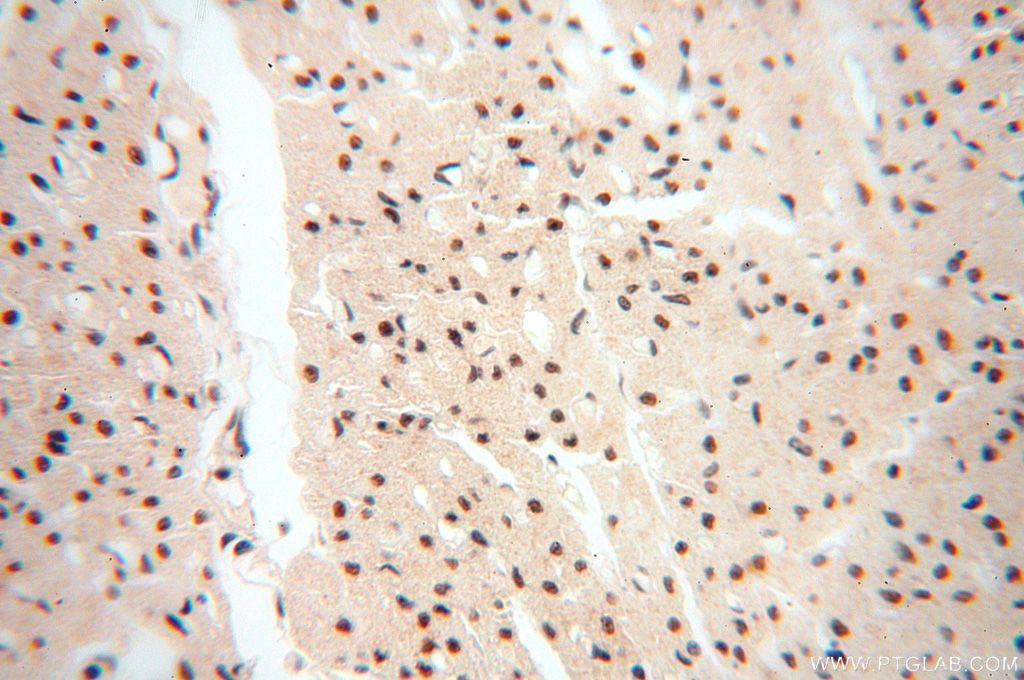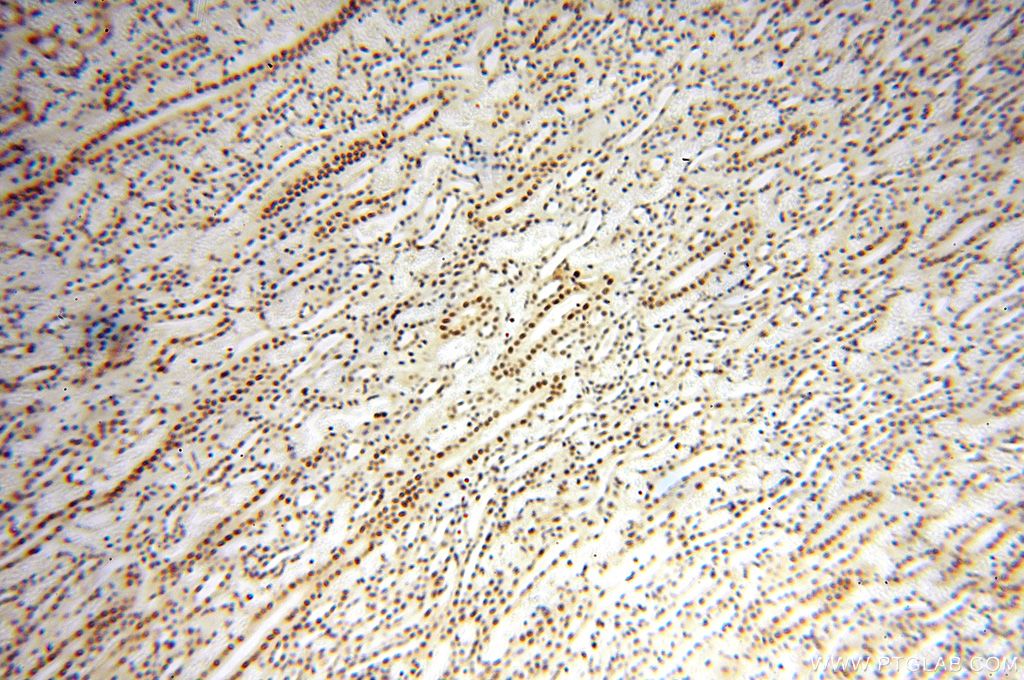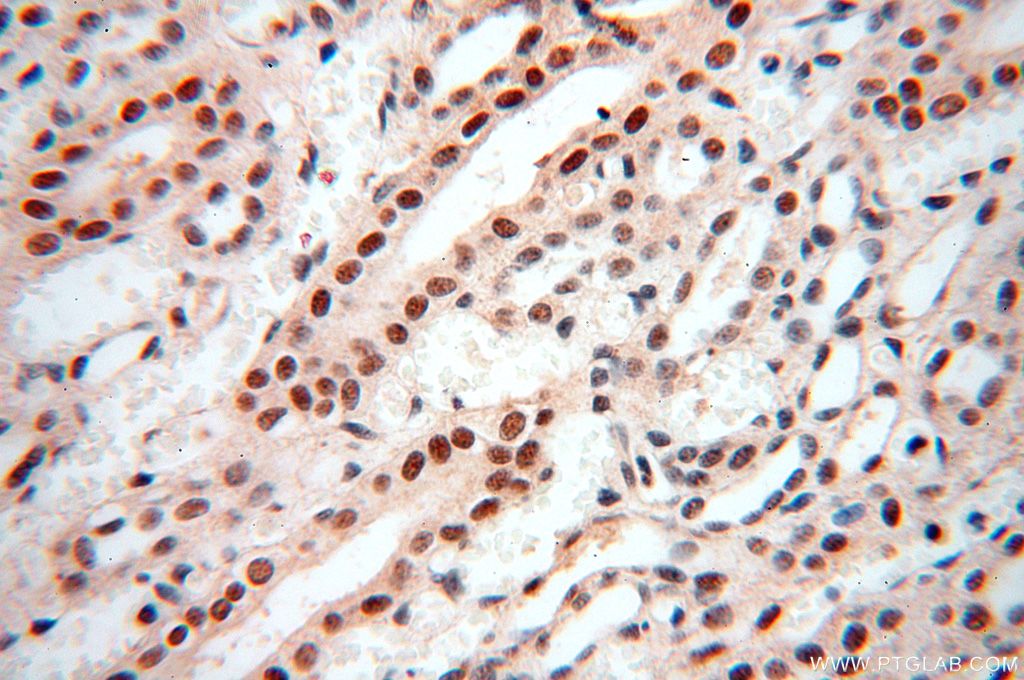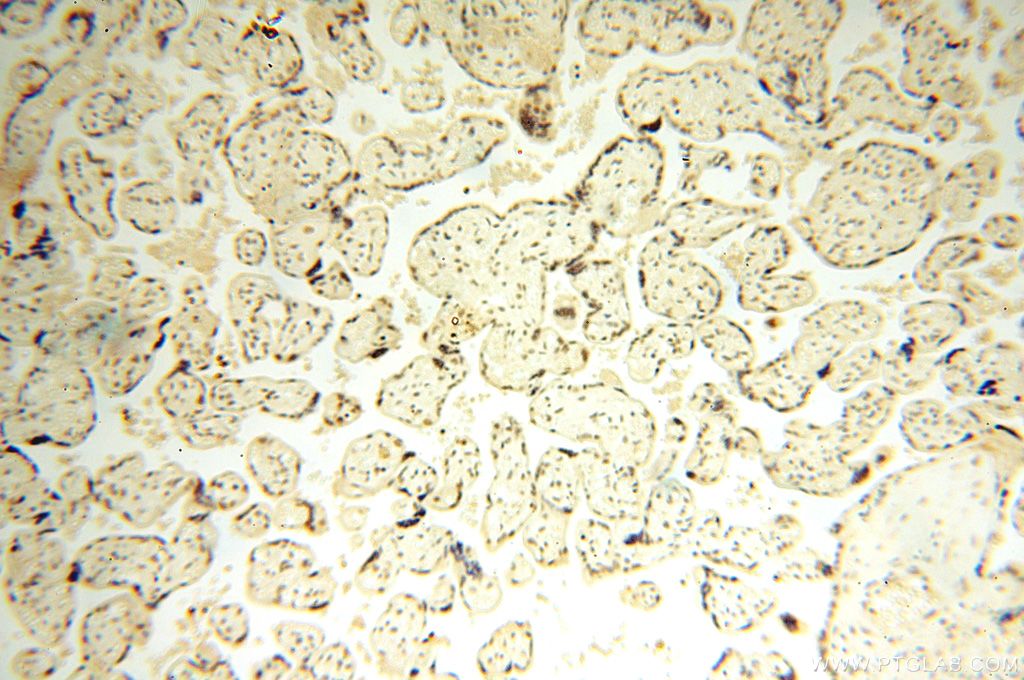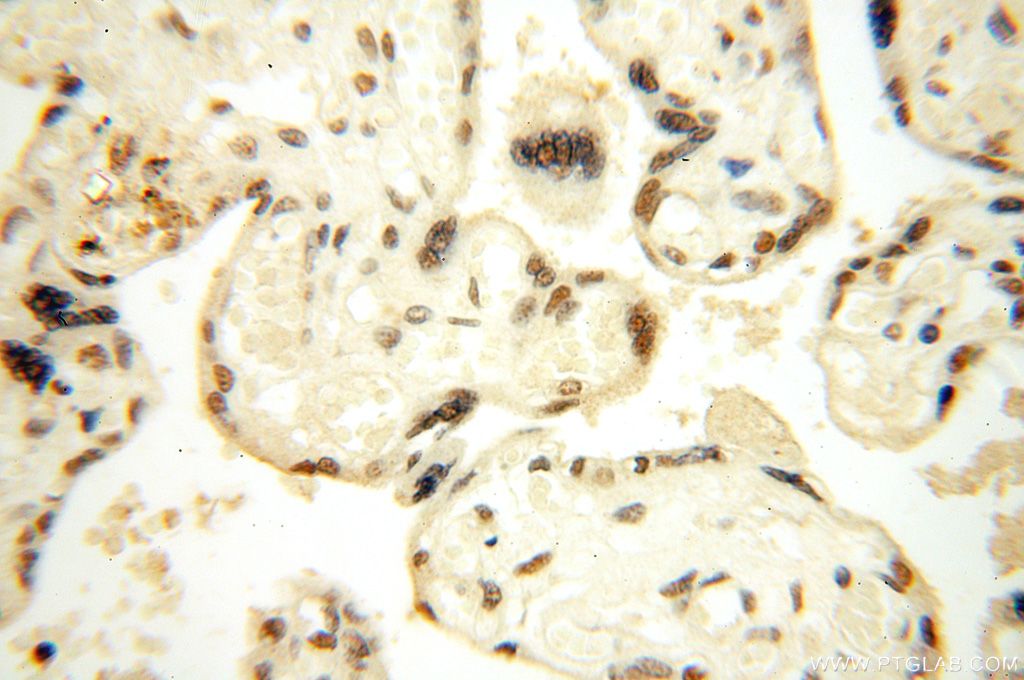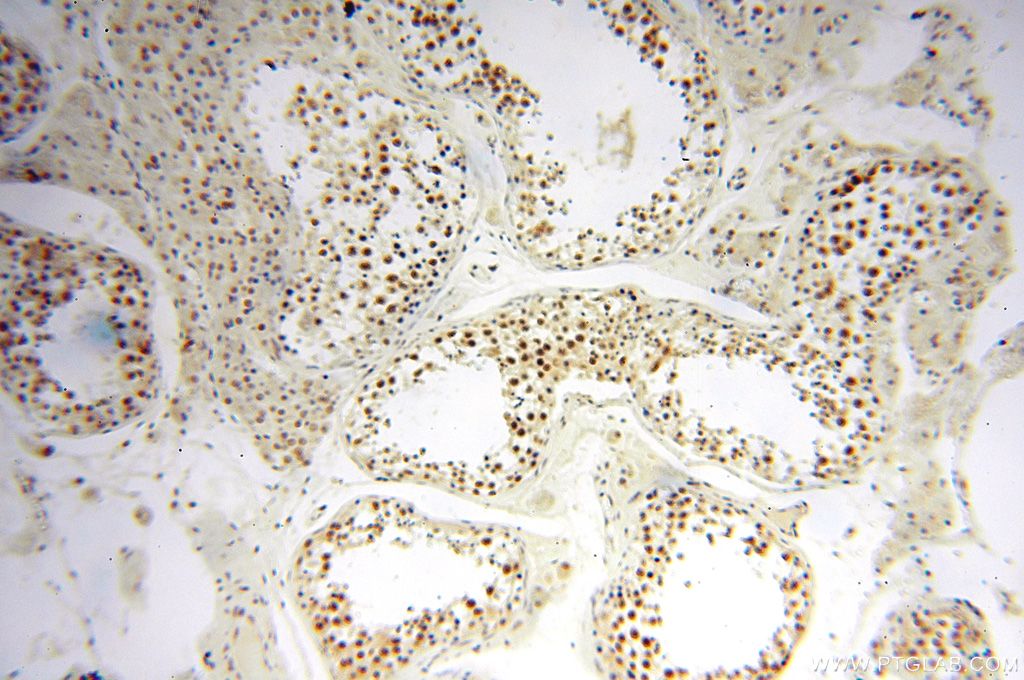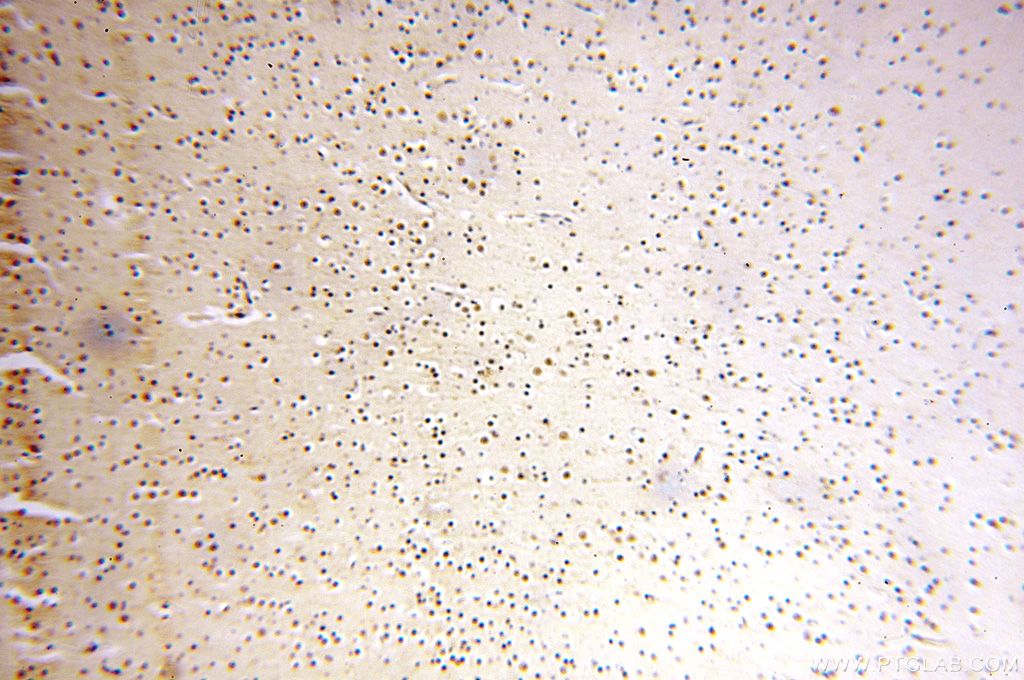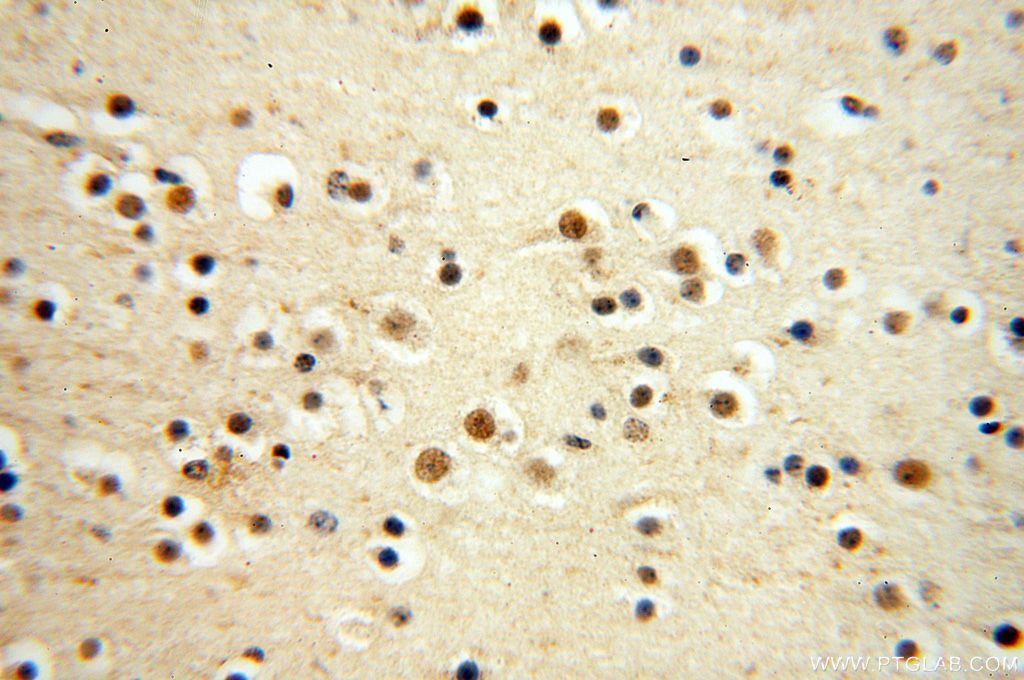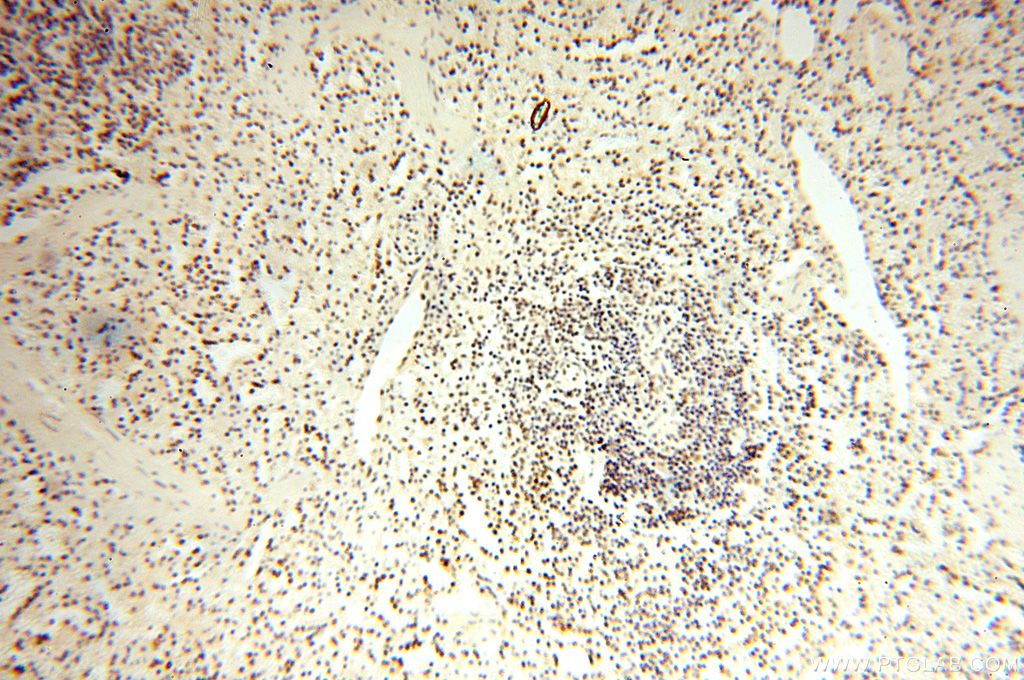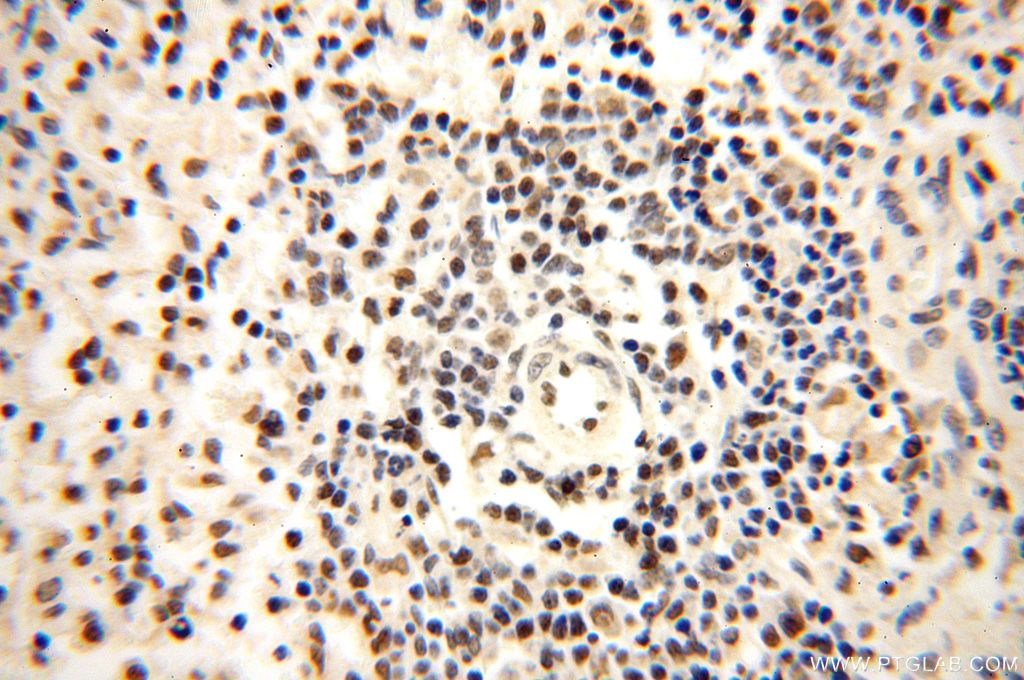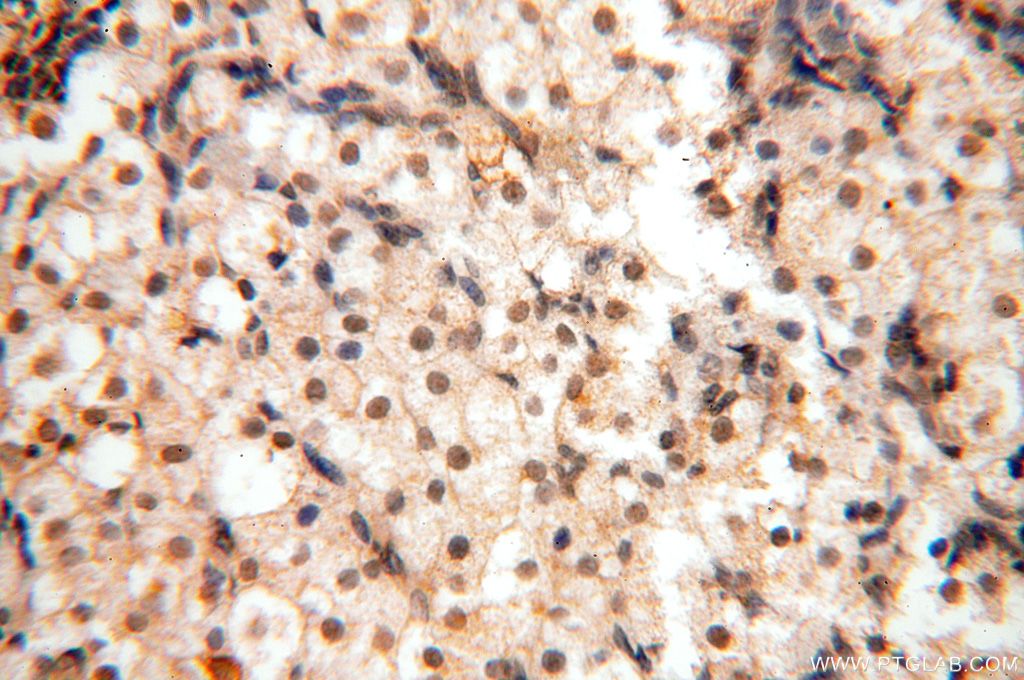- Phare
- Validé par KD/KO
Anticorps Polyclonal de lapin anti-WRAP53
WRAP53 Polyclonal Antibody for WB, IHC, IP, ELISA
Hôte / Isotype
Lapin / IgG
Réactivité testée
Humain, rat, souris
Applications
WB, IHC, IF, IP, ELISA
Conjugaison
Non conjugué
N° de cat : 14761-1-AP
Synonymes
Galerie de données de validation
Applications testées
| Résultats positifs en WB | cellules Raji, cellules HeLa, tissu rénal humain |
| Résultats positifs en IP | cellules HeLa |
| Résultats positifs en IHC | tissu testiculaire de souris, tissu cardiaque humain, tissu cérébral humain, tissu cutané humain, tissu ovarien humain, tissu placentaire humain, tissu rénal humain, tissu splénique humain, tissu testiculaire humain il est suggéré de démasquer l'antigène avec un tampon de TE buffer pH 9.0; (*) À défaut, 'le démasquage de l'antigène peut être 'effectué avec un tampon citrate pH 6,0. |
Dilution recommandée
| Application | Dilution |
|---|---|
| Western Blot (WB) | WB : 1:500-1:2000 |
| Immunoprécipitation (IP) | IP : 0.5-4.0 ug for 1.0-3.0 mg of total protein lysate |
| Immunohistochimie (IHC) | IHC : 1:50-1:500 |
| It is recommended that this reagent should be titrated in each testing system to obtain optimal results. | |
| Sample-dependent, check data in validation data gallery | |
Applications publiées
| KD/KO | See 3 publications below |
| WB | See 11 publications below |
| IHC | See 2 publications below |
| IF | See 3 publications below |
Informations sur le produit
14761-1-AP cible WRAP53 dans les applications de WB, IHC, IF, IP, ELISA et montre une réactivité avec des échantillons Humain, rat, souris
| Réactivité | Humain, rat, souris |
| Réactivité citée | Humain, souris |
| Hôte / Isotype | Lapin / IgG |
| Clonalité | Polyclonal |
| Type | Anticorps |
| Immunogène | WRAP53 Protéine recombinante Ag6522 |
| Nom complet | WD repeat containing, antisense to TP53 |
| Masse moléculaire calculée | 59 kDa |
| Poids moléculaire observé | 72-75 kDa |
| Numéro d’acquisition GenBank | BC002336 |
| Symbole du gène | WRAP53 |
| Identification du gène (NCBI) | 55135 |
| Conjugaison | Non conjugué |
| Forme | Liquide |
| Méthode de purification | Purification par affinité contre l'antigène |
| Tampon de stockage | PBS with 0.02% sodium azide and 50% glycerol |
| Conditions de stockage | Stocker à -20°C. Stable pendant un an après l'expédition. L'aliquotage n'est pas nécessaire pour le stockage à -20oC Les 20ul contiennent 0,1% de BSA. |
Informations générales
WRAP53 (WD40-encoding RNA Antisense to p53), also known as TCAB1 and WDR79, is a multifunctional protein encoded by a gene that produces both a coding mRNA and a regulatory antisense RNA targeting the tumor suppressor p53. Initially identified for its role in maintaining genomic stability by regulating p53 expression, WRAP53 is crucial for telomerase assembly and localization to Cajal bodies, impacting telomere maintenance. It also participates in DNA damage repair and cellular stress responses. The calculated molecular weight of WRAP53 is about 59 kDa, but the actual observed molecular weight is about 72-75 kDa, which may be due to modification.
Protocole
| Product Specific Protocols | |
|---|---|
| WB protocol for WRAP53 antibody 14761-1-AP | Download protocol |
| IHC protocol for WRAP53 antibody 14761-1-AP | Download protocol |
| IP protocol for WRAP53 antibody 14761-1-AP | Download protocol |
| Standard Protocols | |
|---|---|
| Click here to view our Standard Protocols |
Publications
| Species | Application | Title |
|---|---|---|
Genes Dev The scaffold protein WRAP53β orchestrates the ubiquitin response critical for DNA double-strand break repair. | ||
Nat Chem Biol Observation of processive telomerase catalysis using high-resolution optical tweezers. | ||
Oncogenesis RNF8 ubiquitinates RecQL4 and promotes its dissociation from DNA double strand breaks.
| ||
Aging (Albany NY) Relationship between senescence in macaques and bone marrow mesenchymal stem cells and the molecular mechanism. | ||
RNA Biol Phosphorylation of the Cajal body protein WRAP53β by ATM promotes its involvement in the DNA damage response.
| ||
Cancer Cell Int Suppression of TCAB1 expression induced cellular senescence by lessening proteasomal degradation of p21 in cancer cells. |

